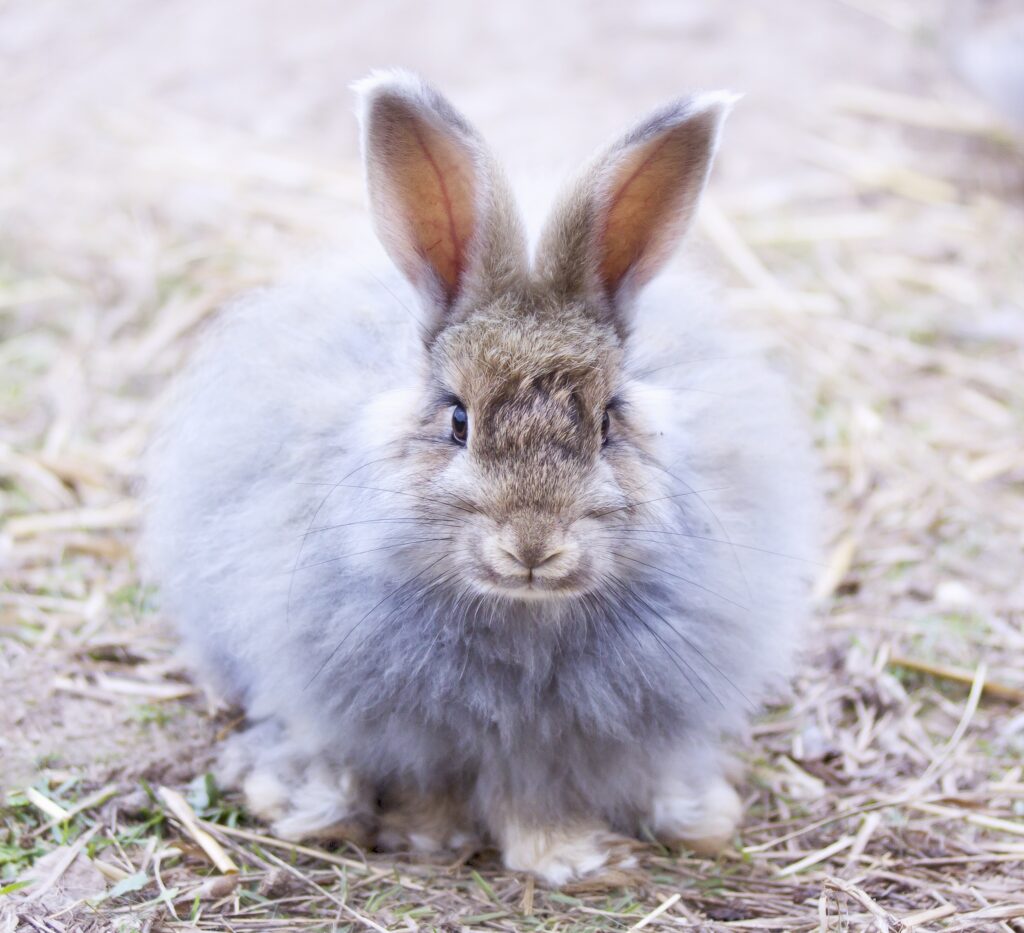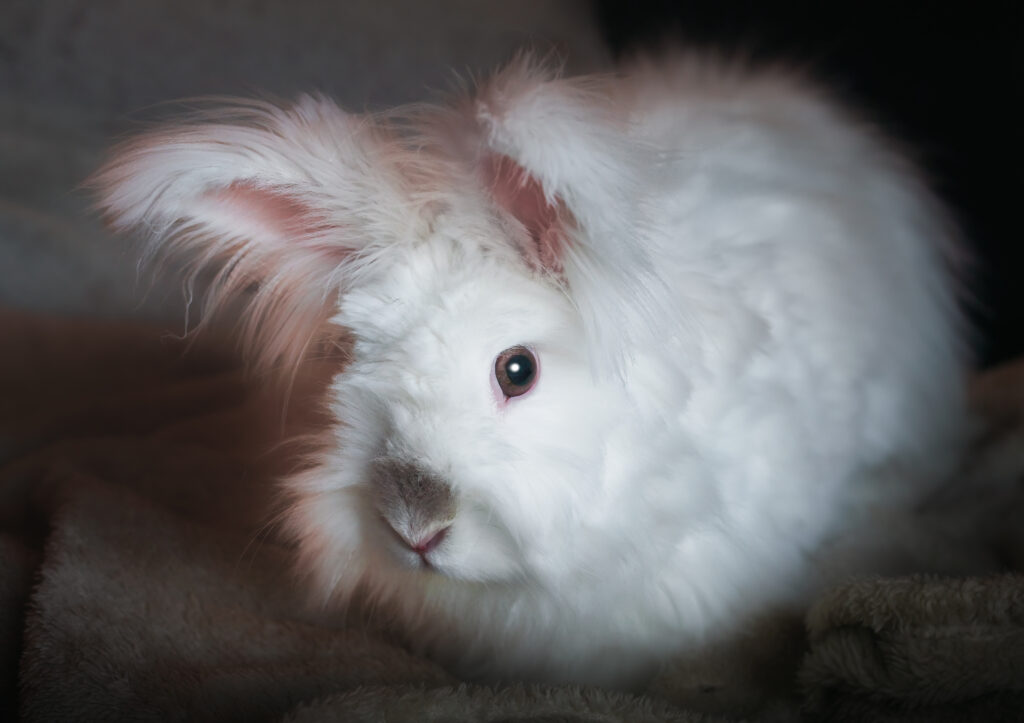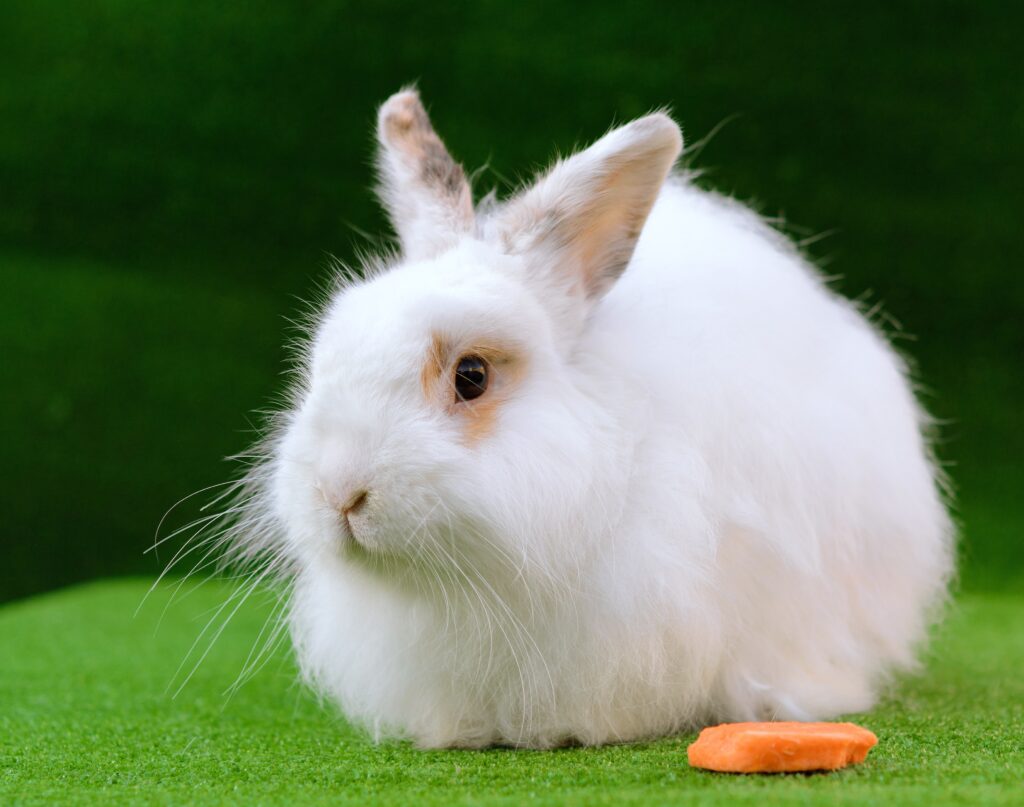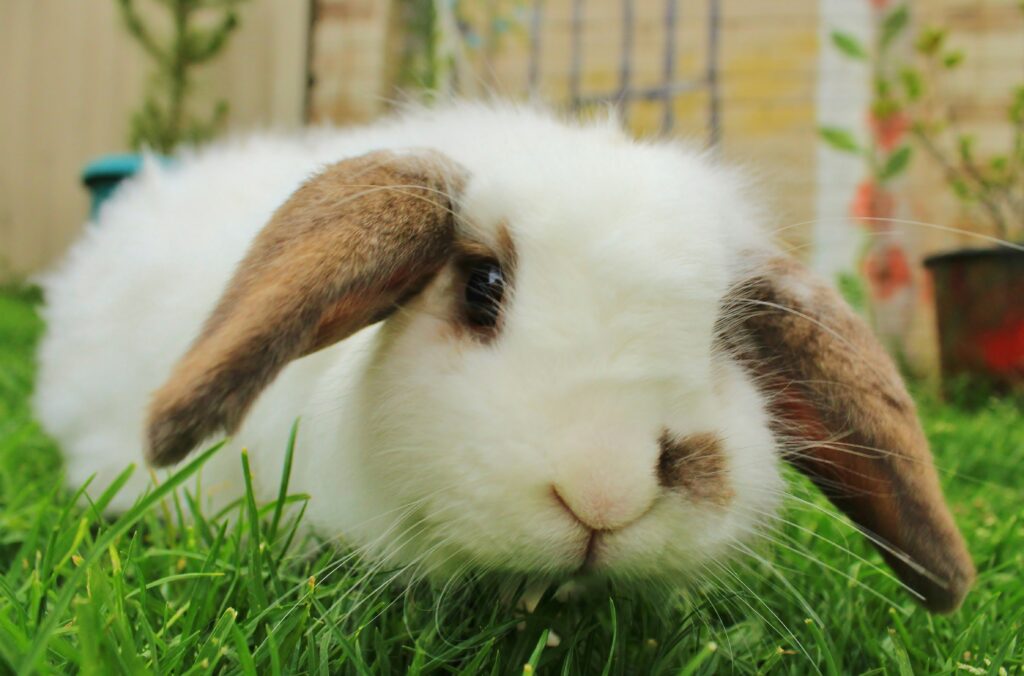
Giant Angora: The Fiber Enthusiast’s Dream
Facts at a glance!
Weight: 9.5 to 10 pounds
Recognized colors:
Ruby-Eyed White
Introduction
With its luxurious fur and gentle disposition, the Giant Angora is a fascinating breed that is popular both as a pet and amongst angora fiber enthusiasts.
In this article, we’ll delve into the history, characteristics, care, and significance of this majestic breed!
History and Origin
The Giant Angora traces its origins back to Turkey, where Angora rabbits were first bred for their wool during the 18th century. These rabbits were highly prized for their soft, silky fur, which was used to make luxurious garments and textiles. The breed eventually made its way to Europe, where it gained popularity among breeders for its exceptional wool-producing abilities.
In the early 20th century, Angora rabbits were imported to the United States, where efforts to improve the breed began in earnest. Breeders focused on developing larger rabbits with more abundant wool, resulting in the creation of the Giant Angora. The breed was officially recognized by the American Rabbit Breeders Association (ARBA) in 1988, solidifying its place in the rabbit fancy world.
Personality
Giant Angoras are known for their calm and gentle demeanor, making them excellent pets. They were bred for generations to make ideal fiber animals, capable of staying calm while being groomed or sheared for long periods of time. They are sociable animals that enjoy both human interaction and interaction with other rabbits. Despite their size, Giant Angoras are docile and easy to handle, making them suitable for children with proper supervision.
Physical Characteristics
As the name suggests, the Giant Angora is a large breed, with adults typically weighing between 9 and 12 pounds. They have a robust, solid build that doesn’t limit them from being active and energetic.
One of the most striking features of the Giant Angora is its dense, wooly coat! The fur is long, soft, and silky, with a distinct halo of fine fibers that give it a fluffy appearance. Giant Angoras can come in a variety of colors, including white, fawn, chestnut, and black, but the only ARBA showable color is ruby-eyed white. Their ears are long and upright, with generous furnishings, adding to their exotic appearance.
Care and Maintenance
Caring for a Giant Angora rabbit involves providing an environment that meets both their physical and mental needs. Here are some essential care requirements to keep in mind:
Housing: Giant Angoras can be housed indoors or outdoors, depending on climate and preference, however care should be taken to ensure they do not overheat. Indoors, they should have a spacious cage or enclosure that allows them to move around comfortably. Ensure that your enclosure has a solid floor component such as a carpet square for your rabbit to rest on, lowering the risk of sore hocks.
Outdoor enclosures should be secure and protected from predators, with adequate shelter from the elements. Unsheared Giant Angoras need to be in a temperature controlled environment, as their heavy coats can easily cause them to overheat.
Diet: A balanced diet is crucial for the health and well-being of Giant Angora rabbits. Their diet should consist primarily of high-quality hay, such as Timothy hay, supplemented high quality rabbit pellets and fresh vegetables in small amounts. Fresh water should be available at all times, provided in a clean water bottle or dish.
Grooming: Giant Angoras require significantly more grooming than other rabbits. Brush them gently every day using a wire toothed comb with rounded ends to prevent mats from forming. Additionally, you should be sure to trim their toenails regularly, every 1 to 2 months. Check out our nail trimming guide here if you are new to trimming toenails!
Exercise: Like all rabbits, Giant Angoras are active animals that require regular exercise to stay healthy and happy. Providing opportunities for daily exercise outside of their enclosure is essential. This can include supervised playtime in a rabbit-proofed area of the home or a secure outdoor space.
Veterinary Care: Regular veterinary check-ups are great for monitoring the health of Giant Angoras and addressing any potential medical issues promptly. They will also be able to provide any necessary vaccinations or spay/neuters.
Health Considerations
Giant Angoras are generally very healthy, but they do come with breed specific health considerations due to their wool coats.
- Wool Block: This dangerous condition is the result of a rabbit accidentally ingesting its own hair as it naturally grooms itself. Wool block is essentially the same as a hairball, but because rabbits don’t have the ability to vomit, the ingested hair has to go through their digestive system. Wool rabbits are especially susceptible to wool block because of the quantity and length of their hair. Regular grooming of your Giant Angora can minimize wool block risk and keep their coat healthy!
- Sore Hocks: Larger rabbit breeds such as the Giant Angora can be susceptible to a condition known as sore hocks because of the greater amount of weight they put on their feet. This is when the bottoms of a rabbit’s feet become sore and inflamed. These sore feet can lose fur (exacerbating the problem), begin to bleed, and can become infected. A predisposition to sore hocks can be genetic, but it is most commonly seen when a rabbit spends a great deal of time resting on a wire cage bottom, or to a lesser extent when a rabbit often rests on a solid, hard surface.
- Gastrointestinal Stasis: This condition occurs when a rabbit’s digestive system slows down or stops functioning properly, often due to poor diet, lack of exercise, or stress. Signs include reduced appetite, lethargy, and decreased fecal output. Prompt veterinary attention is crucial to prevent complications.
- Obesity: Giant Angoras rabbits can become overweight if overfed or given too many high-calorie treats. Monitor their diet closely and ensure they receive regular exercise to maintain a healthy weight!
- Respiratory Issues: Like all rabbits, Giant Angoras are susceptible to respiratory infections, especially if kept in damp or poorly ventilated environments. Keep their living area clean and dry and seek veterinary care if you notice signs of respiratory distress such as sneezing or labored breathing.
Conclusion
The Giant Angora is a remarkable breed of rabbit known for its impressive size, luxurious fur, and gentle disposition. Bred for centuries for its wool-producing abilities, the Giant Angora holds significance both as a beloved companion animal and as a valuable resource in the textile industry.
Proper care and maintenance are essential for keeping Giant Angoras healthy and happy, including regular grooming, a balanced diet, and access to veterinary care. By following responsible breeding and husbandry practices, we can ensure the welfare and conservation of this majestic breed for generations to come. Whether as a cherished pet or a show-worthy specimen, the Giant Angora continues to captivate and inspire rabbit enthusiasts around the world!
Looking for similar breeds?
Check these out!

french angora
French Angoras are a similar size to Giant Angoras. This wool breed has a greater number of guard hairs than Giant Angoras making them slightly easier to groom.

english angora
English Angoras are the smallest of the angora breeds. They closely resemble a smaller Giant Angora.

satin angora
Satin Angoras resemble the French Angora, only with a luxurious satin sheen to their coats. Their wool is finer than other angora breeds, meaning they can be more difficult to groom.

Hoppy Haven Rabbitry

Whisker Wonderland Rabbitry
See a Picture Missing?
Here at Hutch Happiness we want to showcase YOUR rabbits! If you have a photo of a rabbit you would like to share, reach out to me at Emily@hutchhappiness.com. Along with your rabbit photo we are happy to provide a link to your rabbitry website if available.

